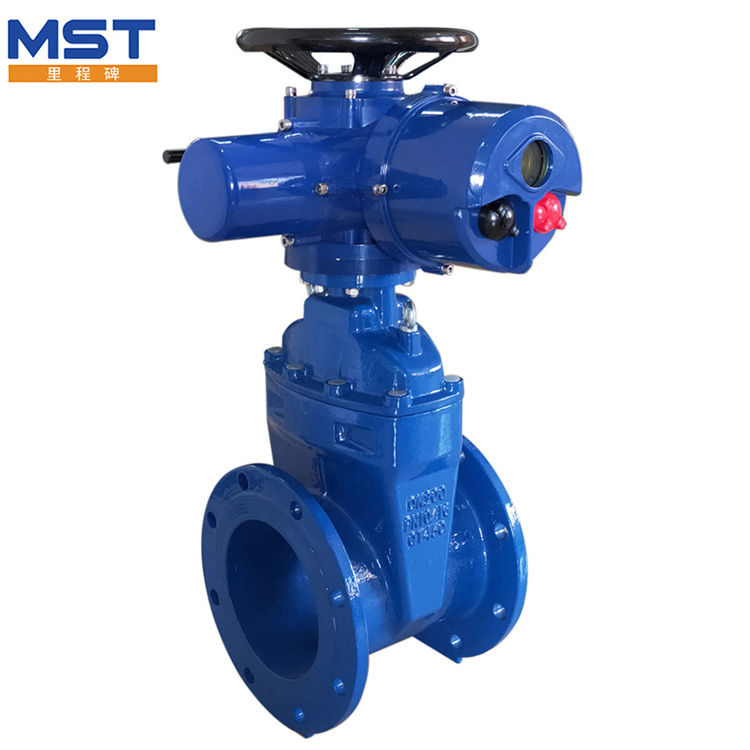Preserving Performance: Essential Maintenance Procedures for Ductile Cast Iron Water Manual Gate Valves
2024-03-02
Introduction:
In the intricate infrastructure of water distribution systems, gate valves serve as the silent sentinels, regulating the flow of water with precision and reliability. To ensure the continued functionality and longevity of these critical components, regular maintenance is essential. Ductile cast iron water manual gate valves, renowned for their durability and resilience, require specific maintenance procedures to uphold their performance over time. In this blog, we delve into the recommended maintenance procedures for ductile cast iron gate valves, highlighting their importance in preserving operational efficiency and system integrity.
1. Routine Inspection:
Regular inspection forms the cornerstone of gate valve maintenance, allowing operators to identify potential issues early and prevent costly repairs or failures. Inspections should encompass visual examinations of valve components, including the body, gate, stem, bonnet, and seats, to check for signs of wear, corrosion, or damage. Any abnormalities or anomalies should be promptly addressed to ensure uninterrupted valve operation.
2. Lubrication:
Proper lubrication is vital to ensure smooth and reliable operation of ductile cast iron water manual gate valves. Lubricants help reduce friction between moving parts, such as the stem and stem nut, facilitating ease of operation and preventing premature wear. Operators should periodically lubricate valve components using compatible lubricants, following manufacturer recommendations for application frequency and quantity.
3. Stem Packing Adjustment:
The stem packing serves as a crucial sealing mechanism in gate valves, preventing water leakage along the stem. Over time, stem packing may wear out or become loose, compromising its effectiveness. Regular adjustment of stem packing tension is necessary to maintain a tight seal and prevent leakage. Operators should periodically inspect and adjust stem packing as needed to ensure optimal performance.
4. Cleaning and Flushing:
Accumulation of debris, sediment, or mineral deposits can impede the functionality of ductile cast iron water manual gate valves, leading to reduced flow rates or valve malfunctions. Regular cleaning and flushing of valves and surrounding pipelines are essential to remove any buildup and maintain unobstructed flow paths. Flushing procedures should be conducted in accordance with industry standards and guidelines to minimize disruption to water distribution operations.
5. Corrosion Protection:
Ductile cast iron material offers inherent corrosion resistance, but additional protective measures may be necessary to safeguard against corrosion in aggressive environments. Surface treatments such as epoxy coating or fusion-bonded powder coating can provide an extra layer of protection against corrosion, extending the service life of gate valves and ensuring long-term durability.
6. Valve Exercising:
Periodic valve exercising is recommended to prevent valve stagnation and ensure operability in emergency situations. Exercising involves manually opening and closing valves to maintain their functionality and verify proper operation. This process helps prevent valve seizure, seat binding, or internal corrosion, enhancing overall system reliability and resilience.
Conclusion:
Ductile cast iron water manual gate valves are integral components of water distribution systems, providing essential flow control and isolation capabilities. By adhering to recommended maintenance procedures, operators can ensure the continued performance and reliability of these valves over their operational lifespan. Routine inspection, lubrication, stem packing adjustment, cleaning and flushing, corrosion protection, and valve exercising are essential practices that help preserve the integrity of ductile cast iron gate valves and uphold the efficiency of water distribution networks. Investing in proactive maintenance measures is key to maximizing the value and longevity of gate valves, ensuring the uninterrupted delivery of clean water to communities and industries alike.



